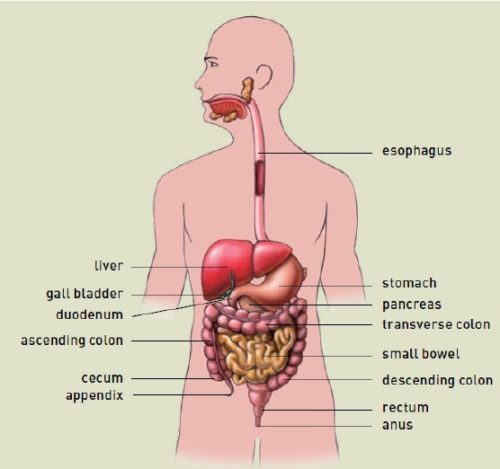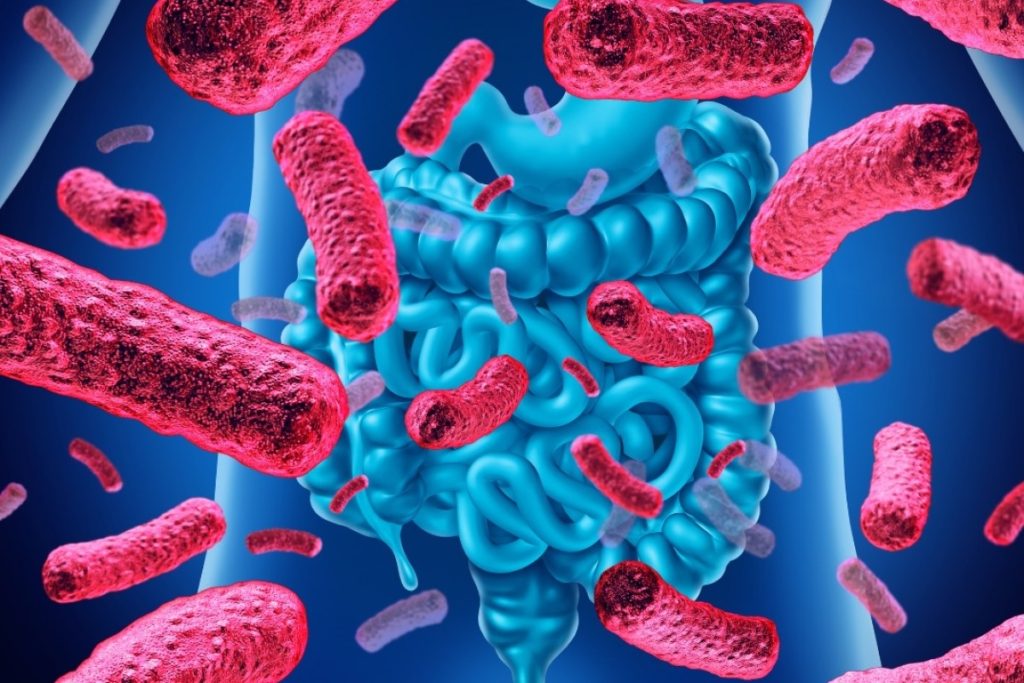
Understanding about Gut
Let us explore the Gut more deeply and dive into a world which is fascinating , exhilarating and unknown to us .Let us go where brave people venture and do not hesitate to discuss matters which have been for centuries either misunderstood or were very well understood in eastern philosophies.
Gut, in most people’s eyes, is good for little more than going to the toilet. Apart from that, people think, it just hangs around inside our bellies, letting off a little “steam” every now and then. People do not generally credit it with any particular abilities. It would be fair to say that we underestimate our gut. To put it more bluntly, we don’t just underestimate it, we are ashamed of it—more “guilt feeling” than “gut feeling”.
The most underrated part which we generally ignore in our discussion and which is abused continuously Is the Gut i.e. intestines and bacteria which lives in these intestines .Perhaps there’s no better word for the microorganisms that live in your intestines and help with digestion than superheroes. Although it has been estimated that at least 10,000 distinct species cohabit the human gut, some experts argue that this number may exceed 35,000. New technologies are finally emerging to help scientists identify all the species, many of which cannot be cultured in a laboratory via traditional methods.
Let us understand the Gut
In order to understand the various disorders and symptoms related to the foods we eat, it is helpful first to understand the gut, its structure (anatomy), and how it works.
The gut is also known as the gastrointestinal tract, the digestive tract, or the alimentary tract. The main job of the gut is to take in food, break it down so that energy and nutrients can be extracted, and then expel the remaining waste. In the process, the gut also has to protect the body from exposure to things that are toxic or not good for it in other ways.

Think of the gut as a hollow tube that runs from the mouth to the anus.This long tube, which averages about twenty feet, is made up of many layers and divided into various parts, each of which performs a specialized function.
After we swallow food, it enters the esophagus, which pushes the food down into the stomach, where food is liquefied and sterilized, and digestion begins.
The semi digested food then passes into the small intestine or small bowel, where food is broken down into its simple building blocks (sugars, amino acids, and fatty acids) and the nutrients are absorbed. The small intestine has three sections with different roles in breaking down food and absorbing nutrients: the duodenum, the ileum, and the jejunum.
The leftovers then move into the large intestine or large bowel, where salts and water are reabsorbed as the contents pass slowly around the several components of the large bowel ,the cecum, the ascending colon, the transverse colon, the descending colon, and the rectum. The contents are packaged into stools that are then excreted via the anus.
While some intestinal bacteria are present in the small bowel, the large bowel contains vast numbers of them. These bacteria feast on undigested or indigestible food, producing short-chain fatty acids that nourish the lining of the large bowel and gas that contributes to flatulence.
The whole process of mixing and moving contents around the gut is controlled by a complex of nerves in the wall of the gut known as the enteric nervous system (ENS) or “gut brain.” The ENS senses what is going into the gut and controls its motility (i.e., muscle activity and its coordination).
Gut reactions to food
As we see above diagram the digestion has many organs involved which work in great coordination among each other. When one or more part of the Gut is out of synchronization negative reaction takes place. There are two types of adverse reactions :
- Immunological reactions. These are reactions to a protein in the food and involve the immune system. This type of reaction, often called a food allergy or food hypersensitivity, is quite uncommon (affecting about one in fifty people).These reactions are always reproducible, reliable responses to particular foods that occur even after consuming only a small amount of the food.
- Non-immunological reactions. These reactions do not involve the immune system and are usually referred to as food intolerances. They are very common (affecting about one in five people). These reactions can vary and depend on the amount consumed, timing of the meal, and other meals consumed in that day.
Majority of food related reactions or diverse falls in non -immunological reactions which are due to imbalance in the Gut and which are difficult to detect. Hence it become important that we focus on the health Gut to minimize the Non -immunological reactions.
YOU ARE WHAT YOU EAT
Fascinating world of Microbiome in the Gut
The Greek physician and father of modern medicine, Hippocrates, first said in the third century B.C.E., “All disease begins in the gut.” This was long before civilization had any proof or sound theory to explain this idea. We didn’t even know bacteria existed until the Dutch tradesman and scientist Antonie van Leeuwenhoek looked at his own dental plaque through a handmade microscope in the late 17th century and found a hidden world of what he called “animalcules.” Today he is considered the father of microbiology.
Microbiome consisting of trillions of microorganisms (also called microbiota or microbes) of thousands of different species. These include not only bacteria but fungi, parasites, and viruses. In a healthy person, these “bugs” coexist peacefully, with the largest numbers found in the small and large intestines but also throughout the body. The microbiome is even labelled a supporting organ because it plays so many key roles in promoting the smooth daily operations of the human body.90 percent of the cells within body are not human ,they are microbes and bacteria known as the microbiome.

The microbiome consists of microbes that are both helpful and potentially harmful. Most are symbiotic (where both the human body and microbiota benefit) and some, in smaller numbers, are pathogenic (promoting disease). In a healthy body, pathogenic and symbiotic microbiota coexist without problems. But if there is a disturbance in that balance brought on by infectious illnesses, certain diets, or the prolonged use of antibiotics or other bacteria-destroying medications ,dysbiosis occurs, stopping these normal interactions.
As a result, the body may become more susceptible to disease. Dysbiosis typically occurs when the bacteria in gastrointestinal (GI) tract — which includes stomach and intestines become unbalanced. Some effects of dysbiosis, such as stomach upset, are temporary and mild. In many cases, body can correct the imbalance without treatment.
Benefits of Microbiome
The microbiome is a miniature world made up of trillions of microscopic, nonhuman organisms that flourish within gastrointestinal tract. These intestinal organisms—bacteria—digest food, govern appetite, control metabolism, orchestrate immune system, influence mood, and even help determine how genes are expressed. They have a major impact on whether heart is healthy, whether bones develop properly, and whether brain feels sharp and clear or unfocused.
Microbiome sustain the gastrointestinal tract so food is properly digested and you get all the nourishment we need. They produce crucial vitamins and other nutrients. They even manufacture natural antibiotics.
Good Gut and diseases it prevent
The ecology that lives within our intestines is dependent on us. And we, likewise, depend on it. Healing this ecology and keeping it in balance is the key to our overall health. A good Gut can take care of following diseases if the Gut is balanced and functioning in harmony.
- ADHD
- Asthma
- Autism
- Allergies and food sensitivities
- Chronic fatigue
- Mood disorders, including depression and anxiety
- Diabetes and cravings for sugar and carbohydrates
- Overweight and obesity, as well as weight-loss struggles
- Memory problems and poor concentration
- Chronic constipation or diarrhoea.
- Frequent colds or infections
- Intestinal disorders, including celiac disease, irritable bowel syndrome,
- and Crohn’s disease
- Insomnia
- Painful joint inflammations and arthritis
- High blood pressure
- Atherosclerosis
- Chronic yeast problems
- Skin problems such as acne and eczema
- Bad breath, gum disease, and dental problems
- Tourette syndrome
- Extreme menstrual and menopausal symptoms
- And many more
Six essential keys for healthy foods and to keep the above diseases at bay and making your Gut a beneficial house of bacteria :
- Prebiotics.
- Probiotics.
- fermented foods.
- low-carb foods.
- gluten-free foods.
- healthful fat
How Gut bacteria helps in making you healthy by Increasing your immunity
- Aid in digestion and the absorption of nutrients which are essential for body health ,energy and building immunity power. Important Sources of energy for the cells of the gut wall (e.g., providing up to 50% of the daily energy requirements of host colonocytes) through the fermentation of carbohydrates to short chain fatty acids, mainly butyrate.
- Act as a detoxification machine. The gut’s bugs have a role in preventing infections by serving as a line of defence against many toxins that make it down into your intestines. In fact, because they neutralize many toxins found in food, they can be viewed as a second liver. So when you decrease the good bacteria in your gut, you increase the workload of your liver.
- Profoundly influence the immune system’s response. Contrary to what you might think, the gut is your biggest immune system organ. Moreover, bacteria can educate and support the immune system by controlling certain immune cells and preventing autoimmunity (a state in which the body attacks its own tissues).
- Produce and release important enzymes and substances that collaborate with your biology, as well as chemicals for the brain, including vitamins and neurotransmitters.
- Create a physical barrier against potential invaders such as bad bacteria (pathogenic flora), harmful viruses, and injurious parasites. Some types of bacteria have hair-like threads that help them swim ,the “flagella,” as these threads are called, helps in preventing stomach rotavirus virus that cause gastroenteritis.
- Help you handle stress through the flora’s effects on your endocrine —hormonal — system.
- Assist you in getting a good night’s sleep.
- Help control the body’s inflammatory pathways, which in turn affect risk for virtually all manner of chronic disease.